Summer series #5: Grand Tour drawings
Throughout history, architects have sketched and painted their way around the globe to try and understand other architects’ buildings. Here, in the fifth edition of our Grand Tour summer series, we showcase the sketches of famous New Zealand architect Sir Miles Warren and David Mitchell and Julie Stout of Mitchell & Stout Architects.
SIR MILES WARREN
Where were these watercolours made?
These are only two of more than 150 watercolours and sketchbooks made travelling in Europe with artist John Coley and his wife Fay. Pencil and watercolour sketching was simply an extension of my architectural practice.
Side of Santa Maria Della Vittoria, Rome, 2002
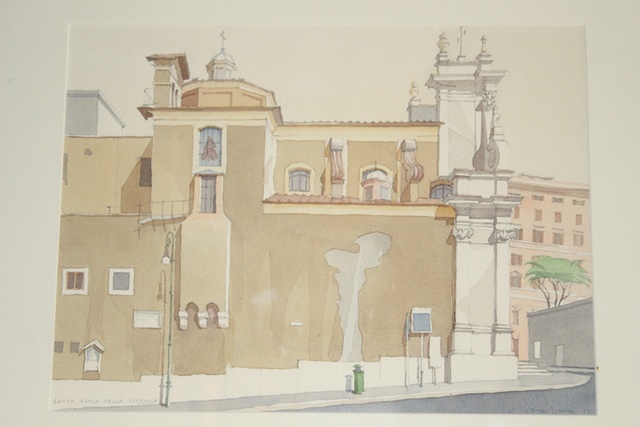
West face of Burgos Cathedral, Spain, 2000
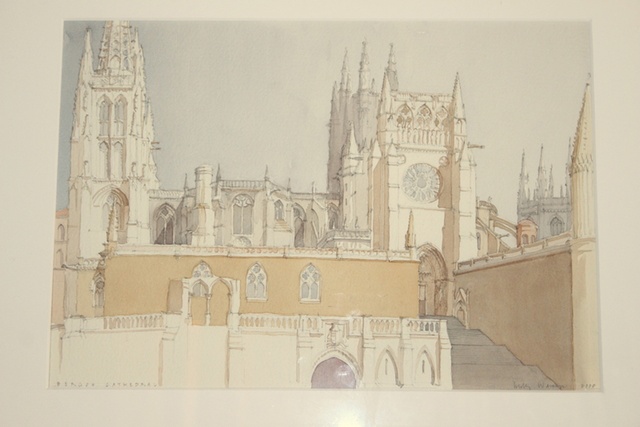
How long do your paintings normally take to produce?
Most of the sketches took no more than two and a half hours. Burgos Cathedral took longer due to its elaborate complex form. I had two cracks at it before and after lunch.
Why do you enjoy drawing while travelling?
I made more than 150 watercolours after I retired from Warren and Mahoney. To draw, to sketch something accurately and attempt to make a composition of it requires one to look, to see, to enjoy, to record in a way that taking a photo rarely equals. Years later I can look at my sketches and remember the occasion, the building and the architecture.
Are you ever stopped by passers-by wanting to look at what you’re painting?
There was little feedback from passers-by, some would attempt to climb behind me but I learnt to accidently flick a brush-load of colour towards too-inquisitive bods.
DAVID MITCHELL & JULIE STOUT
Where were these drawings made?
Leo’s house, both the exterior and interior, was drawn by me in 1992, when Julie [Stout] and I were sailing in the West Pacific. The site is a beach on the small island of Nimoa, Louisiade Archipelago, Papua New Guinea.
Unlike New Zealanders building at the beach, Leo makes no openings facing the sea. Like most Melanesian houses, his is a refuge from the natural world. You can hear the sea from inside, but you can’t see it. Much of the light enters below the outside walls, bouncing off the sand. Leo was alone here, and bemused by my interest.
The exterior is drawn with a fine water-based ball-pen and a wet finger in a good A4 sketchbook. The interior is with a 2B pencil.
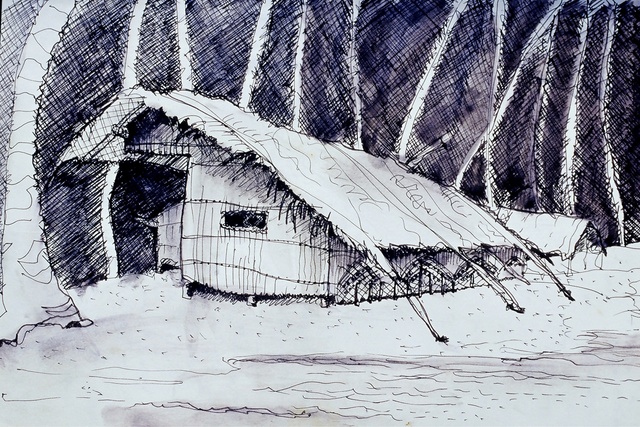
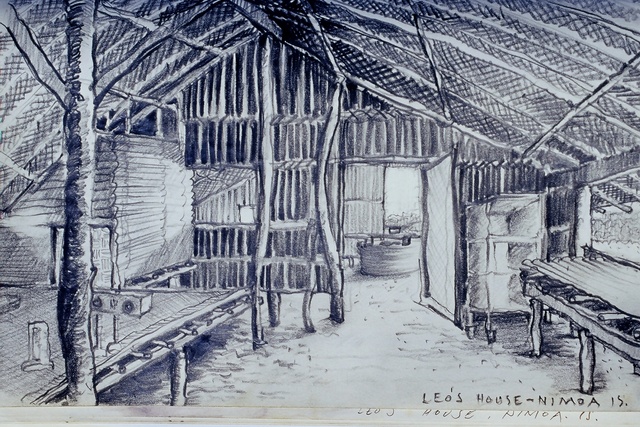
Why do you enjoy drawing while travelling?
Compared with taking photos, drawing is hard work but it makes you look closely. You can put 1,000 photos on your phone in the time it takes to do half a dozen drawings, but what you draw is generally much more memorable. Kids have often watched us drawing and if we give them a pencil they’ll draw too.
Fortunately, architects always have a reason to travel. Architecture can be found everywhere if you’re hunting and, when it knocks you over, you draw it.
JULIE STOUT
Where were these drawings made?
All of these drawings were done with a B pencil in my sketchbook while we [with David Mitchell] were sailing, in 1996.
The sketch below was drawn in the main street of the hilltop village of Bawamatoluo on Nias Island, near Sumatra, in the Indian Ocean.
Why did you choose this site?
This is the chief’s house and two others, in a long strip of wooden row-houses. The street is paved in stone, with massive basalt slabs and pillars outside the houses, carted from afar, and installed to celebrate important events. These are embellished with animal carvings, and inside the chief’s house are finely carved timber panels, in a high and grand room, where the latest occupant was drying patchouli leaves when we visited.
Here, as in the traditional settlements of the Pacific, buildings are of impermanent wood, and ground-works are of permanent stone. Some believe the horned verandahs were influenced by the design of Dutch ships in the 19th century.
Chief’s house, Bawamatoluo, Nias Island
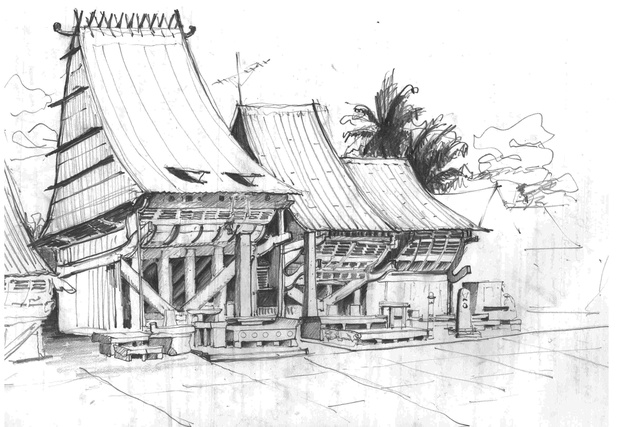
Lake Toba houses
The Raja’s house is on Samosir Island in Lake Toba, Sumatra, where the Batak people have traditionally built saddle-back houses on stilts like the two shown here.
The influence of animism and ancestor worship is strong here, and elaborate above-ground graves are common, though the Toba Batak are now mostly Christian.
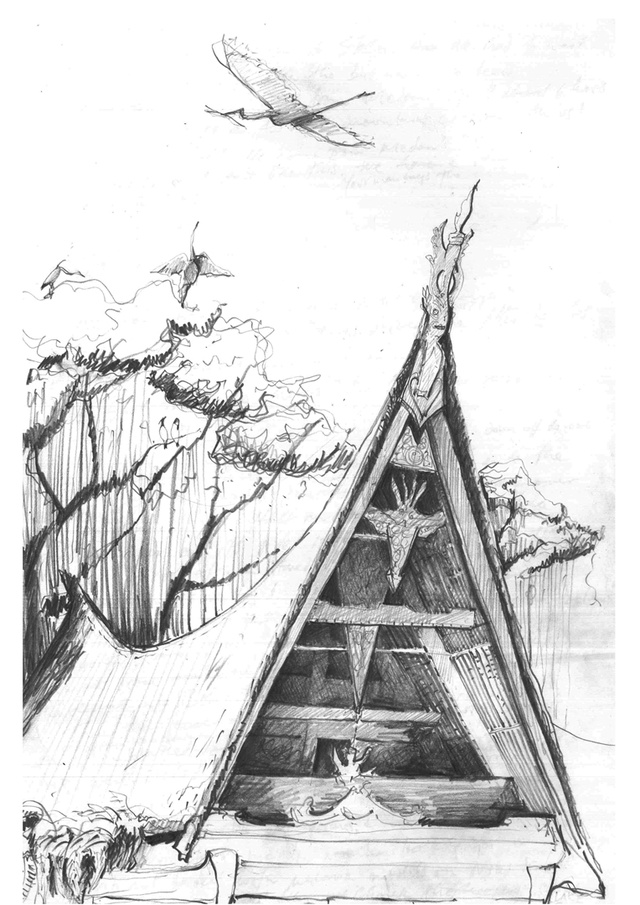
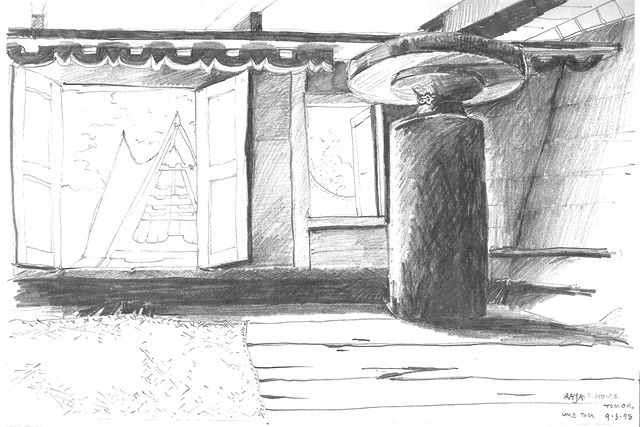

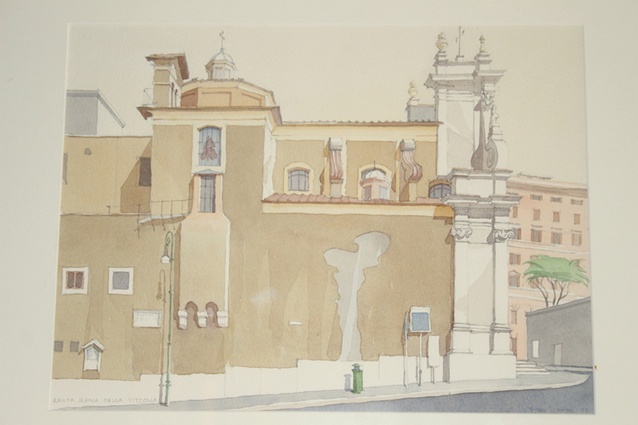
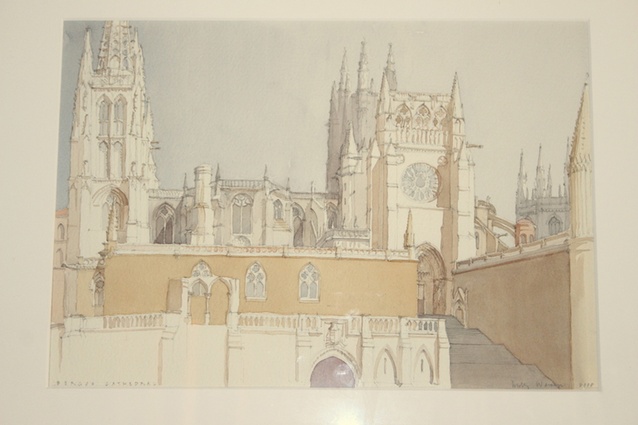
![Leo's house [exterior], Nimoa, Louisiade Archipelago, Papua New Guinea. Drawn by David Mitchell.](https://cdn.architecturenow.co.nz/site_media/media/cache/b3/fd/b3fdbb25f437f4d9fddcfa2536296b28.jpg)
![Leo's house [interior], Nimoa, Louisiade Archipelago, Papua New Guinea. Drawn by David Mitchell.](https://cdn.architecturenow.co.nz/site_media/media/cache/06/04/0604485b939cbeebc6882ff644d8540c.jpg)
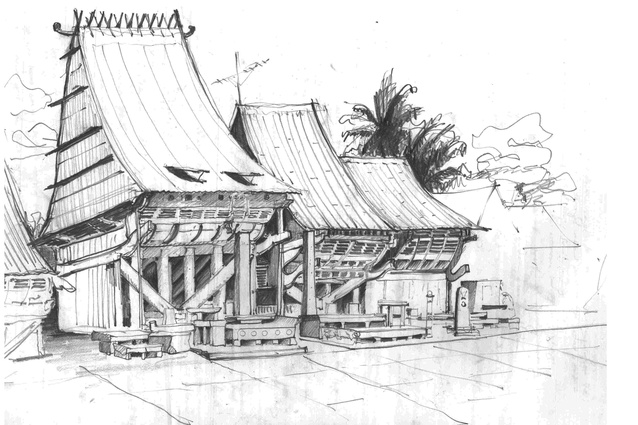
![Lake Toba house [exterior], Samosir Island, Sumatra. Drawn by Julie Stout.](https://cdn.architecturenow.co.nz/site_media/media/cache/7a/55/7a55b8ca31b38b016215a5fb245edcbb.jpg)
![Lake Toba house [interior], Samosir Island, Sumatra. Drawn by Julie Stout.](https://cdn.architecturenow.co.nz/site_media/media/cache/9b/f6/9bf6266eea27c38006c28a675f22616d.jpg)








